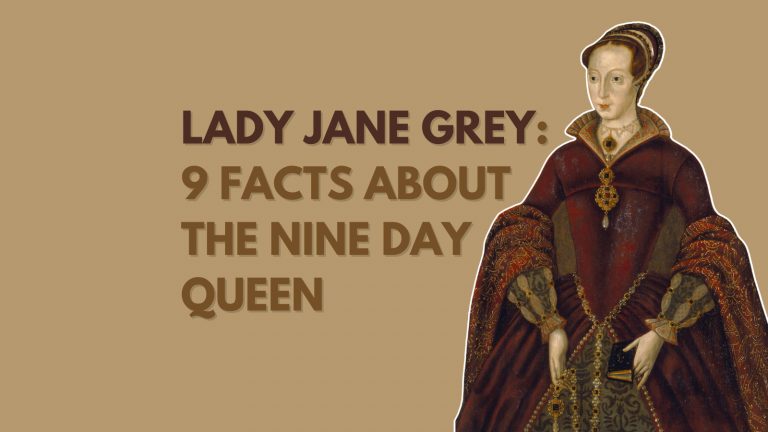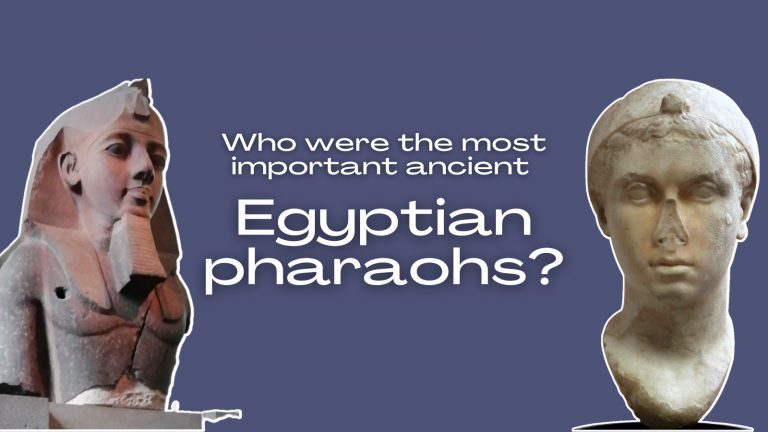Eleanor of Aquitaine: The Most Powerful Woman In Europe?
The Most Eligible Woman in Europe
[/et_pb_text][/et_pb_column][/et_pb_row][et_pb_row _builder_version=”4.15.0″ _module_preset=”default” column_structure=”1_5,3_5,1_5″][et_pb_column _builder_version=”4.15.0″ _module_preset=”default” type=”1_5″][/et_pb_column][et_pb_column _builder_version=”4.15.0″ _module_preset=”default” type=”3_5″][et_pb_image src=”http://historywithhenry.com/wp-content/uploads/2022/04/1-2.png” _builder_version=”4.15.0″ _module_preset=”default” alt=”Eleanor of Aquitaine” title_text=”1″ hover_enabled=”0″ sticky_enabled=”0″][/et_pb_image][/et_pb_column][et_pb_column _builder_version=”4.15.0″ _module_preset=”default” type=”1_5″][/et_pb_column][/et_pb_row][et_pb_row _builder_version=”4.15.0″ _module_preset=”default” global_colors_info=”{}”][et_pb_column type=”4_4″ _builder_version=”4.15.0″ _module_preset=”default” global_colors_info=”{}”][et_pb_text _builder_version=”4.15.0″ _module_preset=”default” global_colors_info=”{}”]Eleanor of Aquitaine became Duchess of Aquitaine in 1137 after her father died. Aquitaine was a kingdom and a duchy with fluctuating boundaries. Aquitaine at the time was the historical region in the southwest corner of Metropolitan France, along the Atlantic Ocean and the Pyrenees mountain range on the border with Spain. Eleanor was thereby unexpectedly thrust into the unenviable position of the most eligible bride in Europe when she was just a teenager. She was also during her lifetime the queen of both England and France, two great medieval European powers, among the wealthiest women in Europe, and was actively involved in government affairs.
[/et_pb_text][/et_pb_column][/et_pb_row][et_pb_row _builder_version=”4.15.0″ _module_preset=”default” global_colors_info=”{}”][et_pb_column type=”4_4″ _builder_version=”4.15.0″ _module_preset=”default” global_colors_info=”{}”][et_pb_text _builder_version=”4.15.0″ _module_preset=”default” global_colors_info=”{}”]Birth and Early Years
[/et_pb_text][/et_pb_column][/et_pb_row][et_pb_row _builder_version=”4.15.0″ _module_preset=”default” global_colors_info=”{}”][et_pb_column type=”4_4″ _builder_version=”4.15.0″ _module_preset=”default” global_colors_info=”{}”][et_pb_text _builder_version=”4.15.0″ _module_preset=”default” global_colors_info=”{}”]Educated conjecture has it that Eleanor may have been 13 years old in the spring of 1137 although her exact year of birth is not known. This being the case, it is suggested that she was born in 1124, either in Poitiers, Bordeaux, or Nieul-Sur-l’Autise. It was at Nieul-sur-l’Autise on Aquitaine’s Atlantic coast that her four-year-old brother William Aigret and their mother died in the spring of 1130 at the castle of Talmont. Eleanor was 6 or 8 at the time.
Eleanor was the firstborn of three children of William X, Duke of Aquitaine, and his wife, Aenor de Châtellerault. She was the granddaughter on her mother’s side of Aimery I, Viscount of Châtellerault, and Dangereuse de l’Isle Bouchard.
The lively and intelligent Eleanor had the best possible education, thanks to her father, and learned arithmetic and history, as well as the constellations and domestic skills such as household management, embroidery, needlepoint, sewing, spinning, and weaving. In addition to school subjects, she was skilled in conversation, dancing, singing, riding, hawking, and hunting. She played backgammon, the harp, checkers, and chess. Her home language was Poitevin, but she could read and speak Latin and was well versed in music and literature.
With the death of her father, Eleanor became the heir presumptive to his domains which happened to incorporate the largest and richest province of France. In fact, it made up the better part of a third of what we know today as the country of France.
While Eleanor had a half-brother Joscelin, who William X acknowledged as his son, he was never to be his heir. Her other legitimate sibling was her younger sister who went by the name Aelith or Petronilla.
[/et_pb_text][/et_pb_column][/et_pb_row][et_pb_row _builder_version=”4.15.0″ _module_preset=”default” global_colors_info=”{}”][et_pb_column type=”4_4″ _builder_version=”4.15.0″ _module_preset=”default” global_colors_info=”{}”][et_pb_text _builder_version=”4.15.0″ _module_preset=”default” global_colors_info=”{}”]Marriage to Louis and Queen of France
[/et_pb_text][/et_pb_column][/et_pb_row][et_pb_row _builder_version=”4.15.0″ _module_preset=”default” global_colors_info=”{}”][et_pb_column type=”4_4″ _builder_version=”4.15.0″ _module_preset=”default” global_colors_info=”{}”][et_pb_text _builder_version=”4.15.0″ _module_preset=”default” global_colors_info=”{}”]King Louis VI of France saw to it in 1137 that Eleanor marry his son and heir, Prince Louis, only months before he died. Eleanor and Louis married in Bordeaux on 25 July 1137. After his father’s death, the two were crowned king and queen of France on Christmas day 1137. Together, they had two daughters, Marie born in 1145 and Alice born five years later in 1150. Their failure to produce a son and heir was a cause of tension between the royal couple, though.
Eleanor was permitted to accompany Louis and his army on a crusade to the Holy Land in 1147, together with her ladies. Louis proved to be a weak and ineffectual military leader and the crusade proved to be a disaster. In comparison, Eleanor proved to be wise and strong.
[/et_pb_text][/et_pb_column][/et_pb_row][et_pb_row _builder_version=”4.15.0″ _module_preset=”default” global_colors_info=”{}”][et_pb_column type=”4_4″ _builder_version=”4.15.0″ _module_preset=”default” global_colors_info=”{}”][et_pb_text _builder_version=”4.15.0″ _module_preset=”default” global_colors_info=”{}”]Estranged marriage
[/et_pb_text][/et_pb_column][/et_pb_row][et_pb_row _builder_version=”4.15.0″ _module_preset=”default” global_colors_info=”{}”][et_pb_column type=”4_4″ _builder_version=”4.15.0″ _module_preset=”default” global_colors_info=”{}”][et_pb_text _builder_version=”4.15.0″ _module_preset=”default” global_colors_info=”{}”]Your content goes here. Edit or remove this text inline or in the module Content settings. You can also style every aspect of this content in the module Design settings and even apply custom CSS to this text in the module Advanced settings.
[/et_pb_text][et_pb_text _builder_version=”4.15.0″ _module_preset=”default” global_colors_info=”{}”]Just three years after the two returned to France in 1149 after the crusade, their marriage had been dissolved. Eleanor and Louis were however estranged before they embarked on the crusades years before but their disparities were made worse while abroad. The relationship between Eleanor and her uncle Raymond was cited as a major cause of friction. She supported her uncle’s intention to re-capture the County of Edessa which had always been the aim of the Crusade. The affection she showed him was also deemed to be excessive, complicated by the closeness they’d shown since her youth. Eleanor wholeheartedly agreed to Raymond’s plans to abduct her.
Eleanor requested an annulment of her marriage to the king after the crusade which Pope Eugene III duly rejected. Louis however consented since their union had failed to produce a son after fourteen years. The annulment was declared on 21 March 1152 on the grounds of consanguinity within the fourth degree. The daughters produced during the marriage were declared legitimate and custody was awarded to Louis while Eleanor had her lands restored to her.
[/et_pb_text][/et_pb_column][/et_pb_row][et_pb_row _builder_version=”4.15.0″ _module_preset=”default” global_colors_info=”{}”][et_pb_column type=”4_4″ _builder_version=”4.15.0″ _module_preset=”default” global_colors_info=”{}”][et_pb_text _builder_version=”4.15.0″ _module_preset=”default” global_colors_info=”{}”]Marriage to Henry, Duke of Normandy
[/et_pb_text][/et_pb_column][/et_pb_row][et_pb_row _builder_version=”4.15.0″ _module_preset=”default” column_structure=”1_5,3_5,1_5″][et_pb_column _builder_version=”4.15.0″ _module_preset=”default” type=”1_5″][/et_pb_column][et_pb_column _builder_version=”4.15.0″ _module_preset=”default” type=”3_5″][et_pb_image src=”http://historywithhenry.com/wp-content/uploads/2022/04/2-2.jpg” _builder_version=”4.15.0″ _module_preset=”default” alt=”Eleanor of Aquitaine” title_text=”2″ hover_enabled=”0″ sticky_enabled=”0″][/et_pb_image][/et_pb_column][et_pb_column _builder_version=”4.15.0″ _module_preset=”default” type=”1_5″][/et_pb_column][/et_pb_row][et_pb_row _builder_version=”4.15.0″ _module_preset=”default” global_colors_info=”{}”][et_pb_column type=”4_4″ _builder_version=”4.15.0″ _module_preset=”default” global_colors_info=”{}”][et_pb_text _builder_version=”4.15.0″ _module_preset=”default” global_colors_info=”{}”]Because of her wealth and power, Eleanor was a prime target for kidnapping. Any kidnapper could claim her lands if he was to forcibly marry her, which meant that although she preferred to remain unmarried, it was unsafe for her to do so. Geoffrey of Anjou tried to kidnap Eleanor in 1152, but she escaped and had an envoy visit Geoffrey’s older brother Henry, Count of Anjou and Duke of Normandy, demanding that he marry her. On 18 May 1152, just eight weeks after her annulment to Louis VII, Henry and Eleanor were married. The two took their place on the throne of England in 1154 and went on to produce five sons and three daughters.
[/et_pb_text][/et_pb_column][/et_pb_row][et_pb_row _builder_version=”4.15.0″ _module_preset=”default” global_colors_info=”{}”][et_pb_column type=”4_4″ _builder_version=”4.15.0″ _module_preset=”default” global_colors_info=”{}”][et_pb_text _builder_version=”4.15.0″ _module_preset=”default” global_colors_info=”{}”]Her Sons Revolt Against Their Father
[/et_pb_text][/et_pb_column][/et_pb_row][et_pb_row _builder_version=”4.15.0″ _module_preset=”default” global_colors_info=”{}”][et_pb_column type=”4_4″ _builder_version=”4.15.0″ _module_preset=”default” global_colors_info=”{}”][et_pb_text _builder_version=”4.15.0″ _module_preset=”default” global_colors_info=”{}”]A very dissatisfied Henry, the oldest surviving son of Eleanor, set about plotting to overthrow his father in 1173 with the aid of his brothers Richard and Geoffrey. They travelled to Aquitaine and Eleanor supported their revolt, either because her power in Aquitaine was constrained or because of the manner in which Henry treated their sons.
[/et_pb_text][/et_pb_column][/et_pb_row][et_pb_row _builder_version=”4.15.0″ _module_preset=”default” global_colors_info=”{}”][et_pb_column type=”4_4″ _builder_version=”4.15.0″ _module_preset=”default” global_colors_info=”{}”][et_pb_text _builder_version=”4.15.0″ _module_preset=”default” global_colors_info=”{}”]Eleanor’s Imprisonment
[/et_pb_text][/et_pb_column][/et_pb_row][et_pb_row _builder_version=”4.15.0″ _module_preset=”default” global_colors_info=”{}”][et_pb_column type=”4_4″ _builder_version=”4.15.0″ _module_preset=”default” global_colors_info=”{}”][et_pb_text _builder_version=”4.15.0″ _module_preset=”default” global_colors_info=”{}”]The revolt failed, and in 1173 Henry II captured Eleanor and kept her confined for nearly 16 years at various locations. One was Old Sarum in Wiltshire, where between 1175 and 1180, much was spent on her care and upkeep at the castle. Here she lived in comfort with fine clothes for herself and her household regularly received from London.
[/et_pb_text][/et_pb_column][/et_pb_row][et_pb_row _builder_version=”4.15.0″ _module_preset=”default” global_colors_info=”{}”][et_pb_column type=”4_4″ _builder_version=”4.15.0″ _module_preset=”default” global_colors_info=”{}”][et_pb_text _builder_version=”4.15.0″ _module_preset=”default” global_colors_info=”{}”]Richard The Lionheart Becomes King
[/et_pb_text][/et_pb_column][/et_pb_row][et_pb_row _builder_version=”4.15.0″ _module_preset=”default” global_colors_info=”{}”][et_pb_column type=”4_4″ _builder_version=”4.15.0″ _module_preset=”default” global_colors_info=”{}”][et_pb_text _builder_version=”4.15.0″ _module_preset=”default” global_colors_info=”{}”]Although Eleanor was kept from her children all through her imprisonment they remained close. Her son took the throne in 1189 as Richard I and immediately freed Eleanor and accorded her powers over English political affairs. Richard was away on a crusade during much of his time as king. Eleanor took her place as vice-regent alongside her younger son, John and the last 15 years of her life were spent proving herself an extraordinary ruler. When Richard died in 1199, Eleanor’s official role in English affairs came to an end although her influence persisted.
[/et_pb_text][/et_pb_column][/et_pb_row][et_pb_row _builder_version=”4.15.0″ _module_preset=”default” global_colors_info=”{}”][et_pb_column type=”4_4″ _builder_version=”4.15.0″ _module_preset=”default” global_colors_info=”{}”][et_pb_text _builder_version=”4.15.0″ _module_preset=”default” global_colors_info=”{}”]Succession of King John
[/et_pb_text][/et_pb_column][/et_pb_row][et_pb_row _builder_version=”4.15.0″ _module_preset=”default” global_colors_info=”{}”][et_pb_column type=”4_4″ _builder_version=”4.15.0″ _module_preset=”default” global_colors_info=”{}”][et_pb_text _builder_version=”4.15.0″ _module_preset=”default” global_colors_info=”{}”]Richard the Lionheart returned to England after the crusade and ruled until his death in 1199. Eleanor lived to see John, her youngest son, succeeded his brother as king. He employed her to be envoy to France and she went on to support John against the rebellion of her grandson Arthur. She later retired to the abbey at Fontevraud as a nun.
[/et_pb_text][/et_pb_column][/et_pb_row][et_pb_row _builder_version=”4.15.0″ _module_preset=”default” global_colors_info=”{}”][et_pb_column type=”4_4″ _builder_version=”4.15.0″ _module_preset=”default” global_colors_info=”{}”][et_pb_text _builder_version=”4.15.0″ _module_preset=”default” global_colors_info=”{}”]Death And Burial
[/et_pb_text][/et_pb_column][/et_pb_row][et_pb_row _builder_version=”4.15.0″ _module_preset=”default” column_structure=”1_5,3_5,1_5″][et_pb_column _builder_version=”4.15.0″ _module_preset=”default” type=”1_5″][/et_pb_column][et_pb_column _builder_version=”4.15.0″ _module_preset=”default” type=”3_5″][et_pb_image src=”http://historywithhenry.com/wp-content/uploads/2022/04/3-2.jpg” _builder_version=”4.15.0″ _module_preset=”default” alt=”Eleanor of Aquitaine” title_text=”3″ hover_enabled=”0″ sticky_enabled=”0″][/et_pb_image][/et_pb_column][et_pb_column _builder_version=”4.15.0″ _module_preset=”default” type=”1_5″][/et_pb_column][/et_pb_row][et_pb_row _builder_version=”4.15.0″ _module_preset=”default” global_colors_info=”{}”][et_pb_column type=”4_4″ _builder_version=”4.15.0″ _module_preset=”default” global_colors_info=”{}”][et_pb_text _builder_version=”4.15.0″ _module_preset=”default” global_colors_info=”{}”]She died at the monastery at Fontevrault, Anjou, in 1204 and is buried at Fontevraud Abbey in Fontevraud.
[/et_pb_text][/et_pb_column][/et_pb_row][/et_pb_section]





